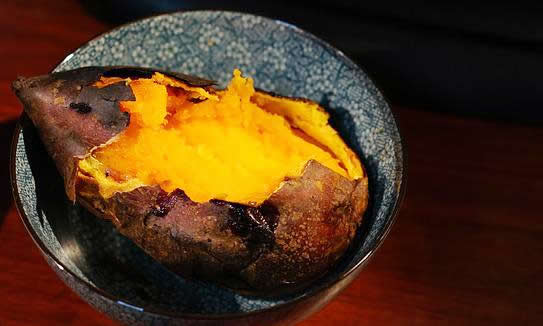先日から「The endurance of Japan’s simple street snack -「生き続ける日本の素朴な屋台菓子」を読んでいます。

・「生き続ける日本の素朴な屋台菓子」(1)
・「生き続ける日本の素朴な屋台菓子」(2)
・「生き続ける日本の素朴な屋台菓子」(3)
・「生き続ける日本の素朴な屋台菓子」(4)
Stalls were set up at the main guard buildings in post towns along important highways, and their sweetness and aroma – and their affordability – caught on.
幹線道路沿いの宿場町の主要な番所に出店し、その甘さと香りの良さ、そして手頃な価格が評判となった。
Signs at stalls sometimes advertised them as “kuri-yori-umai” (better than chestnuts).
屋台の看板には「栗より美味い」と書かれることもあった。
“In Tokyo, many ate them mixed with okayu (porridge made of rice and barley),” Rath said.
「東京では、おかゆに混ぜて食べる人が多かったのです」とラス氏。
The snack became so well-loved that on 8 May 1891, Tokyo newspaper Yomiuri Shimbun called them “the kasutera [Portuguese-inspired sponge cake] for students and the yōkan [a hard, jelly-like sweet made from red beans] for alley society.”
1891年5月8日付の読売新聞には、「学生の『カステラ』、横丁の『羊羹』」と書かれるほど、この菓子は愛されたとある。
The insinuation was that cooked sweet potatoes were a worthy, cheap alternative to otherwise refined sweet treats available at the time.
当時は洗練された甘い菓子の代用として、焼いたサツマイモは安価であったという当てこすりだ。
insinuation「当てこすり、嫌味、(不愉快なことを)遠回しに言う・ほのめかすこと」。
As the century turned, students started influencing the way sweet potatoes were prepared.
世紀が変わると、学生たちがサツマイモの調理法に影響を与えだす。
Daigaku-imo (university sweet potatoes) were wedges slathered in molasses, so named because they were originally sold and eaten in Kanda, near Tokyo University.
たっぷりと蜜を絡めた大学芋は、もともと東京大学に近い神田で売られ、食べられていたことから、この名がついた。
slather「大量、たっぷり」。
molasses「糖蜜、(サトウキビの)糖液」。
“By 1905, there were 1,300 yaki-imo places in Tokyo,” Rath said.
「1905年には東京に1,300軒の焼き芋屋がありました」とラス氏。
大学芋の名前の由来は初めて知りました。
やっぱりよく勉強して頭を使うので、学生さんは甘いものを欲するんでしょうか??
私はあまり甘いものを食べないんですがそれって・・・(笑)。
理由は単純明快!「少ないコストでしっかり楽しく学べるから」。
私自身の経験(高機能でビックリ)をびっしり書いていますので、良かったら読んでみてください。
下のバナーからどうぞ!






